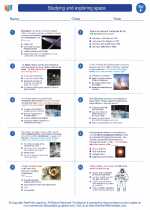Pleistocene
The Pleistocene epoch is a geological time period that lasted from about 2.6 million to 11,700 years ago. It is also known as the Ice Age, as it was marked by extensive glaciation and the repeated advance and retreat of ice sheets across the Earth's surface.
Key Events and Characteristics
During the Pleistocene epoch, the Earth experienced dramatic climate fluctuations, with alternating cold glacial periods and warmer interglacial periods. These climatic changes had a profound impact on the Earth's ecosystems and flora and fauna distribution.
Glaciation
One of the defining features of the Pleistocene epoch was the presence of vast ice sheets that covered large portions of the Earth's surface. These ice sheets had a significant impact on shaping the landscape, carving out valleys and shaping mountain ranges.
Extinct Megafauna
The Pleistocene epoch was home to a variety of now-extinct megafauna, including mammoths, mastodons, saber-toothed cats, and giant ground sloths. These large animals roamed the Earth during this time period, but many of them went extinct at the end of the Pleistocene, possibly due to a combination of climate change and human activity.
Study Guide
- What was the duration of the Pleistocene epoch?
- Describe the climate fluctuations during the Pleistocene.
- Explain the impact of glaciation on the Earth's landscape.
- Identify at least three species of megafauna that lived during the Pleistocene.
- Discuss the possible reasons for the extinction of Pleistocene megafauna.
By studying the Pleistocene epoch, we can gain a better understanding of the Earth's past climate dynamics and the impact of environmental changes on ecosystems and species diversity.
.◂Science Worksheets and Study Guides Sixth Grade. Studying and exploring space

 Worksheet/Answer key
Worksheet/Answer key
 Worksheet/Answer key
Worksheet/Answer key
 Worksheet/Answer key
Worksheet/Answer key
 Vocabulary/Answer key
Vocabulary/Answer key
 Vocabulary/Answer key
Vocabulary/Answer key
 Vocabulary/Answer key
Vocabulary/Answer key
 Vocabulary/Answer key
Vocabulary/Answer key
